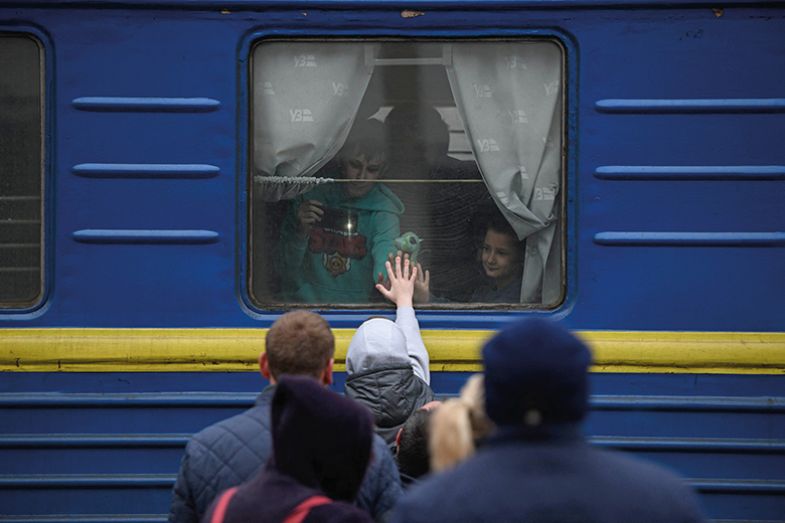The World University Rankings 2023 are out now
As the global research community looks cautiously towards a post-pandemic era, what might that future hold?
Prognostication in such volatile times is notoriously challenging. However, it seems apparent that two powerful and opposing trends will shape the global research environment in far-reaching and complex ways.
First, the good news. International collaboration (as measured by papers published by co-authors in two or more different countries) has been rising steadily for a generation. This has been driven by the recognition that the process of finding solutions to the world’s most pressing problems is enhanced through global research cooperation. Moreover, international collaborations produce especially impactful research, as measured by citation counts. Publications with authors from three or more countries have a normalised citation impact of more than twice the overall global average.
The power of international collaboration has been strikingly demonstrated by the global response to Covid-19. The first months of the pandemic witnessed unprecedented international cooperation in response to this global health crisis. This included efforts to develop vaccines in a staggeringly short time, to formulate new diagnostics and therapeutics, to track the emergence of new variants in real time, and to rethink public health policy.
As the pandemic wore on, international co-publication returned to pre-pandemic levels, though with some variability based on the geography and intensity of outbreaks.
However, bibliometric indicators – useful as they are – probably understate the scale and importance of international research collaboration. Even as international co-publication returned to pre-pandemic levels, researchers collaborated in myriad ways across international boundaries. Authors used preprint servers to exchange research with colleagues from around the world on an unprecedented scale. The global scientific community shared data, samples, testing and fabrication facilities. International teams tested emerging hypotheses and joined global infectious disease surveillance projects. For example, the GISAID database provides public access to nearly 5 million Omicron genome sequences collected by researchers from some 199 countries and territories. These data have been critical in tracking, understanding, and responding to Covid variants (and other infectious diseases) as they emerge.
In short, global research collaboration has been trending upwards for decades, with positive outcomes for researchers and societies alike. The benefits generated by this global research enterprise have been especially obvious during the pandemic and for several decades before, but have also accelerated advances in scholarship in many other fields.
Now the bad news. An unstable geopolitical landscape is undermining international research collaboration, and reshaping the global research mission. These developments will have profound effects on the pace and direction of scientific advances, and the geography of international cooperation.
Russia’s invasion of Ukraine is perhaps the most obvious example, and its effects on research – and international research collaboration – are already being felt. Ukrainian research capacity has been decimated. Many scholars have fled the country (one estimate puts the number at more than one-quarter). Many Ukrainian students are displaced or, quite literally, studying in bomb shelters.
Meanwhile, Russian researchers are facing boycotts, sanctions and restrictions. Many prominent collaborations involving Russian scientists or agencies have been cancelled or suspended. The €1.3-billion ExoMars project led by the European Space Agency has severed its ties with Russia. Cern has shelved or terminated partnerships with Russian scientists and institutions. The country now faces an exodus of talent, including thousands of young researchers. And the Biden administration has recently proposed a strategy to recruit Russian scientists and engineers to the US.

Another obvious example comes from rising tensions with China. A 2018 news story in Nature observed that scientific collaboration between the US and China had led to more high-quality publications than those of any other pair of collaborating countries, helping propel knowledge forward in many fields.
Recent geopolitical tensions between China and the US now threaten this collaboration. They have resulted in a host of immigration and visa challenges for Chinese students and scholars in the US. For example, in 2018 the State Department limited visas for Chinese graduate students in certain technical fields to a single year (with the possibility of renewal), down from five years. The Trump administration’s “China Initiative” committed law enforcement resources to investigate and prosecute alleged trade secret theft and economic espionage, with predictable effects.
The result of these and other similar measures was a chilling effect on collaboration with Chinese institutions and scholars, and racist actions directed at researchers and students of Chinese descent. Collaboration with Chinese researchers stalled in 2018 and 2019 and, for the first time in two decades, declined in 2020. Despite the recent decision by the Biden administration to cancel the most stringent components of the China Initiative, relations between the two countries remain strained, and this is likely to have lasting implications for science and discovery.
What these examples point to is the beginning of a fundamental transition in the geography of global research collaboration – one that follows the current restructuring of globalisation itself. In place of offshoring and globally distributed supply chains, geopolitical tensions are prompting major economies to pursue “reshoring” (repatriating overseas production activity) and “friend-shoring” (limiting supply chains to trusted, like-minded partners who embrace similar political values). It seems likely that global research will follow suit, fracturing into blocs of “like-minded” partners. If so, then the days of wide-open global research collaboration may well be behind us.
These developments pose some important questions for research in higher education.
First, will the global scientific enterprise that has been so enriched by decades of international collaboration be irreparably undermined? As noted above, research partnerships, open information exchange and data-sharing proved extremely valuable during the pandemic. Researchers from rival nations collaborated as colleagues on shared goals. Will this still be possible in the future?
Second, the current reorganisation of international research collaboration is in many ways reminiscent of the Cold War, in which rival nations harnessed their own scientific enterprise to advance geopolitical and military goals. The most vivid expression of this competitive phenomenon was the “Space Race” of the 1950s and 1960s. As the current fragmentation proceeds, what impact will this have on the advancement of knowledge, and to what ends?
Third, while the protagonists in this emerging global competition are well known, many countries and regions of the world remain unaligned with either bloc. In an increasingly fragmented global research space, collaboration with such nations offers exciting opportunities. How can universities best engage in partnerships with emerging research performers such as India and many nations in Africa?
As the geopolitical environment becomes more challenging, it is likely that universities will be increasingly lonely champions for global research collaboration.
Meric Gertler is president of the University of Toronto.
后记
Print headline: As the old order falls away, new bonds form




